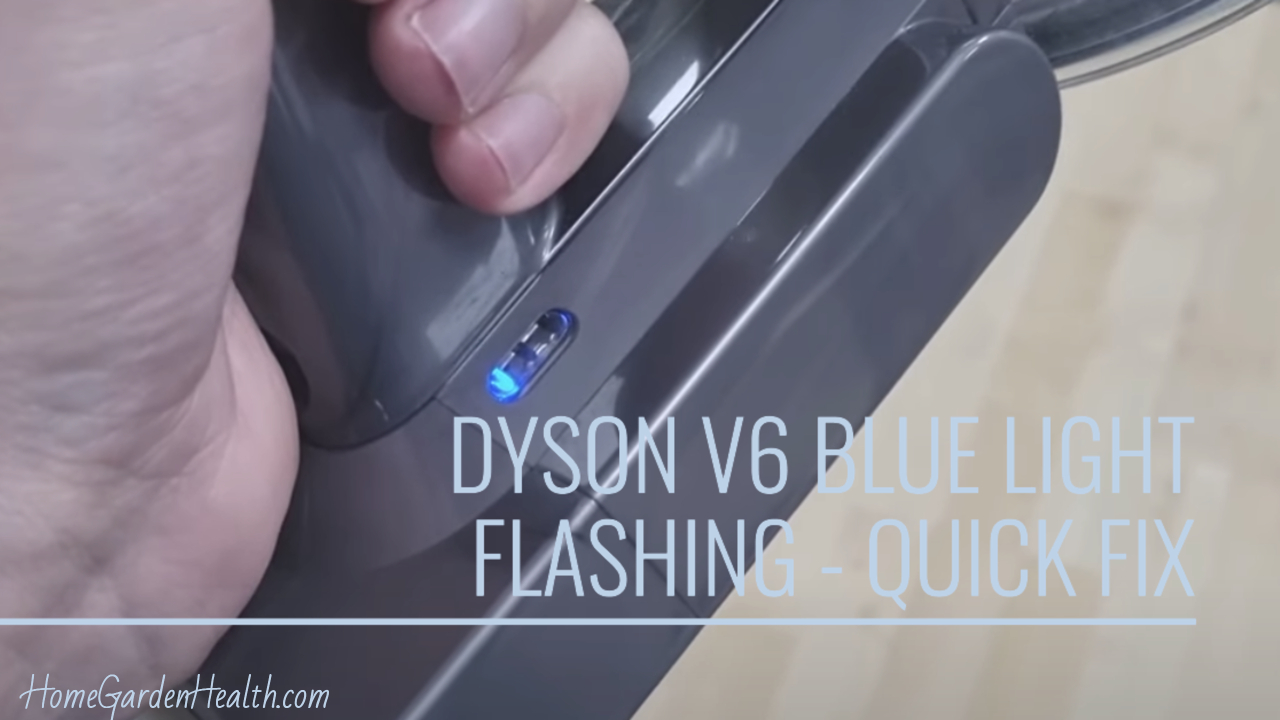
Dyson V6 cordless vacuums are renowned for their powerful suction and convenience. However, encountering a flashing blue light on your Dyson V6 can be perplexing. This comprehensive guide aims to demystify the reasons behind the flashing blue light and provide actionable solutions to ensure your vacuum operates at its best.
We love our Dyson V6 at HomeGardenHealth, it makes vaccuming a breeze instead of feeling like a chore, but we have had our Dyson experience the dreaded flashing blue light issue, luckily there are a few quick simple fixes that will have you once again weilding your V6 in no time.
Flashing Blue Light Dyson V6: Identifying the Cause
Why is My Dyson V6 Blue Light Flashing?
The blue light on your Dyson V6 is an integral part of its diagnostic system, providing vital information about its operational status. A flashing blue light typically indicates one of the following issues:
- Low Battery Power: The most common reason for a flashing blue light is a depleted battery needing recharge.
- Transient Power Issues: Rapid flashing could signify no power supply or a temporary malfunction.
- Overheating or Extreme Temperatures: If the device is too hot or too cold, it may trigger a flashing blue light as a safety measure.
- Obstructions or Blockages: Clogged filters, full dust containers, or obstructed airflow can cause the light to flash.
Step-by-Step Troubleshooting Guide
Charging and Battery Check
- Charge the Battery: Ensure the battery is adequately charged.
- Inspect Battery Health: In some cases, the battery might be nearing the end of its lifespan and may require replacement.
Clearing Obstructions and Ensuring Proper Attachment
- Inspect and Clean Filters: Regularly check and clean the vacuum’s filters.
- Empty the Dust Container: A full dust container can impede airflow and performance.
- Ensure Proper Attachment of Components: Misaligned or loosely attached components can trigger the flashing light.
Environmental Considerations
- Check Ambient Temperature: Ensure the vacuum is operated in a temperature-appropriate environment to prevent overheating or freezing.
Advanced Diagnostics
- Motor Filter Check: Inspect the motor filter for hidden blockages.
- Seek Professional Assistance: If the issue persists, contacting Dyson’s customer support or a professional technician is advisable.
Preventative Maintenance for Long-Term Performance
To keep your Dyson V6 functioning optimally, regular maintenance is crucial. This includes:
- Regularly Cleaning Filters: Clean the filters every month and replace them annually.
- Battery Care: Charge the battery fully before each use and avoid leaving it on the charger for extended periods.
- Avoid Overloading the Dust Container: Regularly empty the dust container to maintain efficient airflow.
A flashing blue light on your Dyson V6 is a signal for attention. By understanding the causes and following our detailed troubleshooting guide, you can swiftly resolve most issues and ensure your vacuum continues to perform at its best.
We hope the guide helped you solve the Dyson V6 blue light flashing problem, if it didnt or you found another weay to fix the issues please let us know in the comments area below.
Official Dyson User Guide / Manual Download Here (pdf 5.75MB)
Frequently asked Questions
A steady blue light signals that the boost button is activated, ensuring enhanced suction power. If the blue light is blinking, it means the battery’s charge is depleting. Rapidly flashing blue light is a sign of either no power or a temporary issue, such as needing to inspect the filter or clear any obstructions.
To reset the V6 vacuum, start by detaching it from the charger. Next, take out the vacuum’s battery. Then, firmly press and hold the battery’s reset button for a duration of 10 seconds.
In case your vacuum fails to turn on due to a blockage, you’ll notice a blue light flashing near the MAX button. Clearing these blockages is essential to restore your vacuum’s functionality.
Typically, the Dyson battery in these handheld vacuums is observed to have a lifespan of about 4 years. It’s common for lithium-ion batteries to start deteriorating after the initial year, given their limited number of charging cycles.


